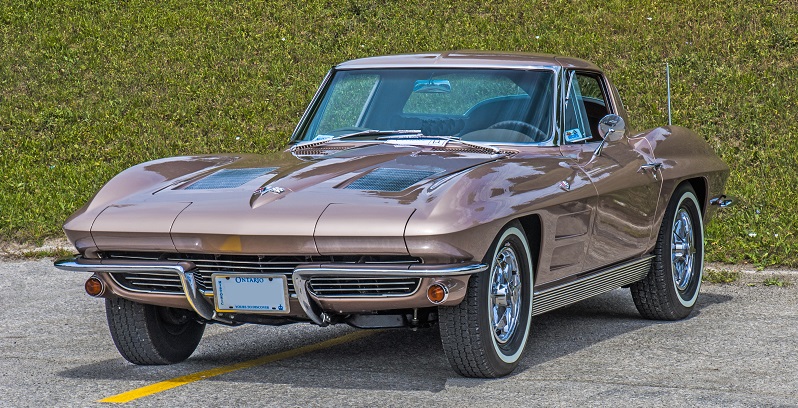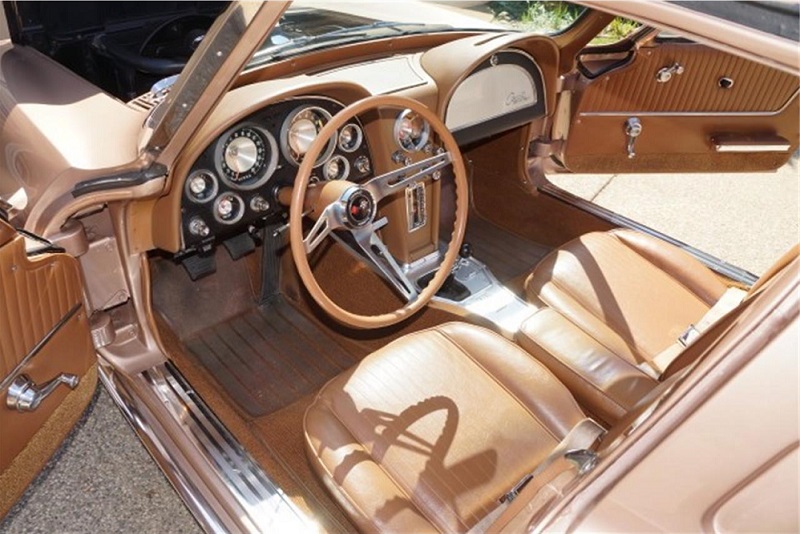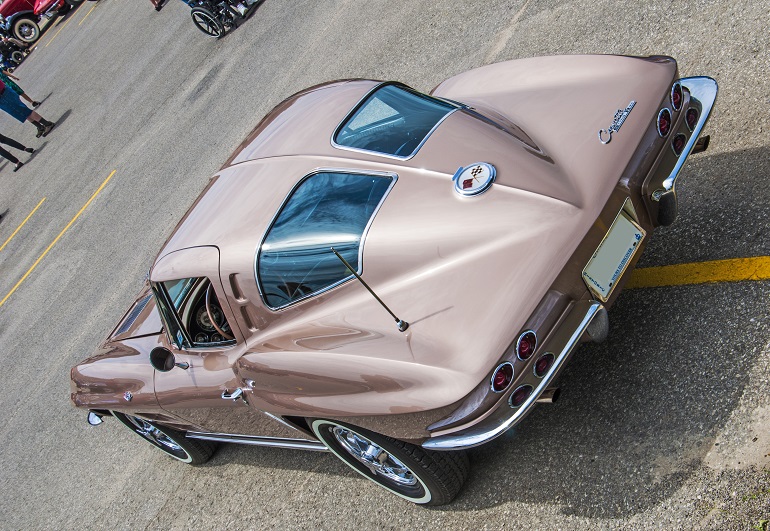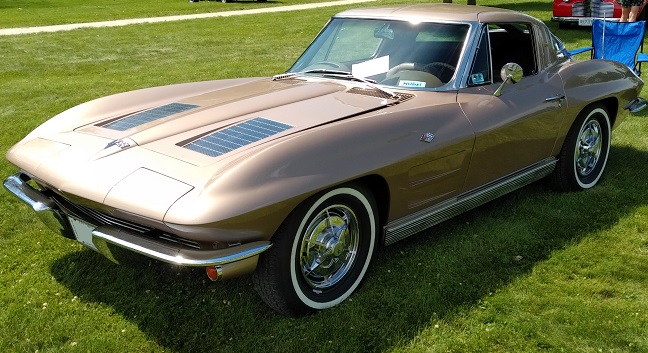For Fan Car Friday this week we bring you Sven and gorgeous 63 Corvette Split Window Coupe. Fan Car Friday is a segment where we want to share with the world the automobiles that our fans have. We have absolutely no affiliation/relationship with the cars, the build or the owners. This post was made with written consent from the owner.

“This is a 1963 Chevrolet Corvette Split Window with a 300hp engine and original colour Saddle Tan/Saddle Tan. I imported this car into Canada from California in October 2017. I have the original bill of sale and Protection Plan Booklet. Still has the original engine, transmission, and differential. A restoration was done sometime in the late 1980s and it got an NCRS Second Flight in 2011. Working on some items that will bring it up to a Top Flight soon. Stunning car and always gets a ton of looks.
Wanted one ever since I was young, but life got in the way. No real backstory for this car…just really wanted one. Started looking and learning about them a few years ago and this one happened to pop up. I belong to NCRS and since I live in Ontario Canada and the car was in Sacramento, an NCRS judge near Sacramento volunteered to check the car for me. He called me and said if I didn’t buy it, he was going to!! Owner was super accommodating and when I saw the car, I knew it was the right one. Very solid and original car. Car was sold at a dealer in Wisconsin in 1963 and then owner supposedly moved to California in 1964 and it has been there until I bought it. Still investigating history of the car and I think I am the 7th owner. Previous owner had a pile of documentation right back to original bill of sale. The car is still fairly “new” to me, so I don’t have any real stories, but looking forward to my life long journey with it.”

The Chevrolet Corvette (C2) (also known as the Chevrolet Corvette Sting Ray) is the second generation of the Chevrolet Corvette sports car, produced by the Chevrolet division of General Motors for the 1963 to 1967 model years.

The 1963 Corvette Sting Ray not only had a new design, but also newfound handling prowess. The Sting Ray was also a somewhat lighter Corvette, so acceleration improved despite unchanged horsepower. For the 1963 model year, 21,513 units would be built, which was up 50 percent from the record-setting 1962 version. Production was divided almost evenly between the convertible and the new coupe – 10,919 and 10,594, respectively – and more than half the convertibles were ordered with the optional lift-off hardtop. Nevertheless, the coupe wouldn’t sell as well again throughout the Sting Ray years. In fact, not until 1969 (by which time the coupe came with removable T-tops) did the closed Corvette sell better than the open one. Equipment installations for 1963 began reflecting the market’s demand for more civility in sporting cars. The power brake option went into 15 percent of production, power steering into 12 percent. On the other hand, only 278 buyers specified the $421.80 air conditioning; leather upholstery – a mere $80.70 – was ordered on only 1,114 cars. The cast aluminum knock-off wheels, manufactured for Chevy by Kelsey-Hayes, cost $322.80 a set, but few buyers checked off that option. However, almost 18,000 Sting Rays left St. Louis with the four-speed manual gearbox – better than four out of every five.
All 1963 cars had 327cid engines, which made 250 hp standard, with optional variants that made 300 hp, 340 hp and 360 hp. The most powerful engine was the Rochester fuel injected engine. Options available on the C2 included AM-FM radio (mid 1963), air conditioning, and leather upholstery. Also available for the first time ever on a Corvette was a special performance equipment package the RPO Z-06, for $1,818.45. These Corvettes came to be known as the “Big Tanks” because the package initially had a 36.5-US-gallon (138 l; 30.4 imp gal) gas tank versus the standard 20-gallon for races such as Sebring and Daytona. At first, the package was only available on coupes because the oversized tank would not fit in the convertible.
In 1963 only 199 Z-06 Corvettes were produced, usually reserved for racing, and of the 199 a total of six were specifically created for Le Mans racing by Chevrolet. One of the six 1963 Z-06 Sting Ray’s was built late in 1962 to race at Riverside on 13 October 1962. They were destined to compete in a different sort of race for sports cars, a NASCAR sanctioned event on the famous Daytona Oval, the Daytona 250 – American Challenge Cup. This meant the cars needed to be prepared to a different set of rules, the same as those for the big Grand National stock cars. The chassis was modified extensively and an experimental 427 cu in (7,000 cc) engine installed.[10] The car was lightened in every way possible and weighed just over 2,800 lb (1,300 kg). Extra fuel was carried in a specially fabricated tank occupying the area behind the driver. Driven by Junior Johnson, plagued by rain in the race, substitute driver Billy Krause finished third behind Paul Goldsmith’s Pontiac Tempest and A. J. Foyt in another Corvette.
New for the 1963 model year was an optional electronic ignition, the breakerless magnetic pulse-triggered Delcotronic, first offered by Pontiac on some 1963 models.
https://en.wikipedia.org/wiki/Chevrolet_Corvette_(C2)

Want your car to be featured as one of our Fan Car Friday’s post? Know somebody that might? Use the contact link at the bottom and email us a couple of photos as well as your contact information and your vehicle could be featured on an upcoming Friday post. Please make sure to put FAN CAR in the subject heading.
One of my favourite American cars, and what a stunning example. If I am ever in a position to start buying my prioritized list of cars, this car would be near the top. I would like to have one like Sven found.
My friend is even more adamant, and has a collection of ’63 split window models, one in each of the original colours available.
He said he resigned himself to not realistically being able to buy a real one.
One of the best cars ever made. This car looks like a piece of art!!!!!
wow thanks for posting this stunning 63 Vette the only way this car could have been more eye appealing is if the option was available for cream coloured interiour
Where is this Tan/Tan SWC located in Ontario…? Stunning Vette////
Used to one, Just like this one….